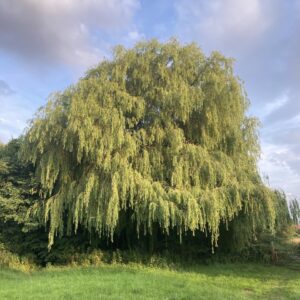Heartnut
(Japanese Walnut)
Juglans Ailantifolia var. Cordiformis
This native of Japan is a variety of the Japanese Walnut that produces heart shaped nuts. Growing from seed can produce variations in the offspring’s nut shape, size and ease of cracking. For true specimens, grafted trees must be grown. It will typically begin producing fruit within 10 years. Tree parts and especially roots produce a chemical called juglone that inhibit growth of some plants in the root zone. Trees have both male and female flowers and are wind pollinated. Planting two or more trees will improve seed crop quantity through cross pollination. Can be susceptible to late spring frosts which will terminate flowering and subsequent fruit. Hybridizes readily with other walnuts including Butternut to produce offspring called Buartnut. Should not be planted near natural stands of Butternut.
Additional information
| Foliage | Deciduous |
|---|---|
| Locale | Native to Asia |
| Height | Medium (30-60ft) |
| Width | Wide |
| Form | Broad |
| Growth Rate | Fast |
| Longevity | Long (over 100 years) |
| Hardiness Zones * | 5 |
| Sun Exposure | Full Sun (over 6 hrs), Partial Sun (4 to 6 hrs) |
| Soil Preferences * | Moist, Slightly Acidic, Well Draining |
| Soil Tolerances | Clay, Slightly Alkaline |
| Ornamental Interest | Leaves (shape) |
| Wildlife Value | Birds (fruits/seeds), Large Mammals (fruits/seeds), Small Mammals (fruits/seeds) |
| Human Value | Carpentry (wood), Fuel (wood) |
| Seed Collection | Ordered Online |
| Planting Considerations | Allelopathic, Messy Leaf Litter, Messy Seed Litter |

















